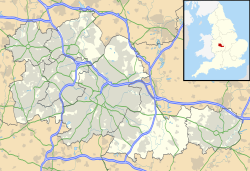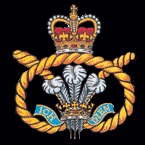
The Staffordshire Regiment (Prince of Wales') (or simply "Staffords" for short) was an infantry regiment of the British Army, part of the Prince of Wales' Division. The regiment was formed in 1959 by the amalgamation of the South Staffordshire Regiment and the North Staffordshire Regiment (Prince of Wales'), and in 2007 was amalgamated with the Cheshire Regiment and the Worcestershire and Sherwood Foresters Regiment to become the 3rd Battalion, Mercian Regiment.

The South Staffordshire Regiment was a line infantry regiment of the British Army in existence for only 68 years. The regiment was created in 1881 under the Childers Reforms by the amalgamation of the 38th Regiment of Foot and the 80th Regiment of Foot. The regiment saw service in the Second Boer War, World War I and World War II.

The Mercian Regiment is an infantry regiment of the British Army, which is recruited from five of the counties that formed the ancient kingdom of Mercia. Known as 'The Heart of England's Infantry', it was formed on 1 September 2007 by the amalgamation of three existing regiments. The Regiment has had fifteen operational deployments since its formation.
The West Midlands Regiment was a short-lived British Territorial Army regiment from 1999 until it was re-designated as 4th Battalion, Mercian Regiment, in 2007.
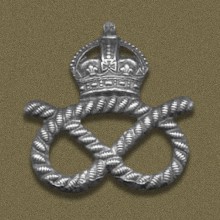
The Staffordshire Yeomanry (Queen's Own Royal Regiment) was a mounted auxiliary unit of the British Army raised in 1794 to defend Great Britain from foreign invasion. It continued in service after the Napoleonic Wars, frequently being called out in support of the civil powers. It first sent units overseas at the time of the Second Boer War and saw distinguished service in Egypt and Palestine in World War I. During World War II it gave up its horses and became a tank regiment, serving in the Western Desert and landing in Normandy on D-Day. Postwar the Staffordshire Yeomanry became part of the Queen's Own Mercian Yeomanry with one of the squadrons being designated 'Staffordshire Yeomanry' until 2021.

The North Staffordshire Regiment (Prince of Wales's) was a line infantry regiment of the British Army, which was in existence between 1881 and 1959. The 64th (2nd Staffordshire) Regiment of Foot was created on 21 April 1758 from the 2nd Battalion of the 11th Regiment of Foot. In 1881, under the Childers Reforms, the 64th Regiment of Foot was merged with the 98th (Prince of Wales's) Regiment of Foot (originally raised in 1824) to form the Prince of Wales's (North Staffordshire Regiment). In 1921 the regimental title was altered to the North Staffordshire Regiment (Prince of Wales's).
The Staffordshire Brigade was a volunteer infantry brigade formation of the British Army from 1888 to 1936. It saw active service on the Western Front in World War I, including the attacks on the Hohenzollern Redoubt and the Gommecourt Salient, and the assault crossing of the St Quentin Canal, 'a most remarkable feat of arms'.
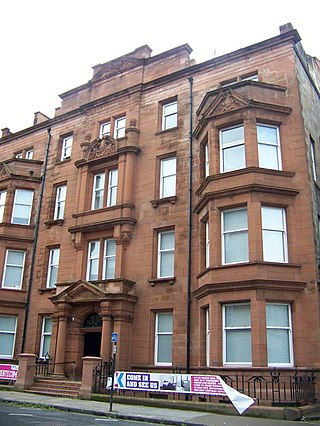
The West Princes Street drill hall is a former military installation in Glasgow, Scotland.
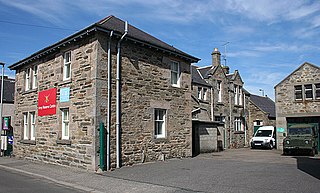
The Union Street drill hall is a military installation in Keith, Scotland.

The Colliergate drill hall is a former military installation at the corner of Colliergate and St Andrewgate in York.

Londesborough Barracks is a military installation in Kingston upon Hull, England.

The St Paul's Street drill hall is a military installation in Huddersfield, West Yorkshire. It is a Grade II listed building.

The Whittimere Street drill hall is a former military installation in Walsall, West Midlands.
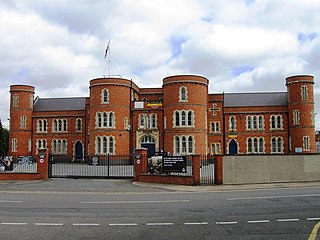
The Clare Street drill hall is a military installation in Northampton, Northamptonshire. It is a Grade II listed building.

The Priory Road drill hall is a military installation at Hornsey in London.

The Horninglow Street drill hall is a former military installation in Burton upon Trent. It is a Grade II listed building.

The Tower Street drill hall is a military installation in York. It lies on Tower Street, in the city centre.
The 3rd (Volunteer) Battalion, Staffordshire Regiment was a Territorial Army unit of the regular Staffordshire Regiment which was formed in 1988, but disbanded in 1999. The battalion's successor continues to serve in the Mercian Regiment to this day.
The Light Infantry and Mercian Volunteers was a short-lived infantry regiment of the British Army, in existence from 1971 to 1975.
The Mercian Volunteers was a Territorial Army infantry regiment of the British Army, in existence from 1967 to 1988. Upon formation, it consisted of a singular battalion, however it later raised a second in 1975.

